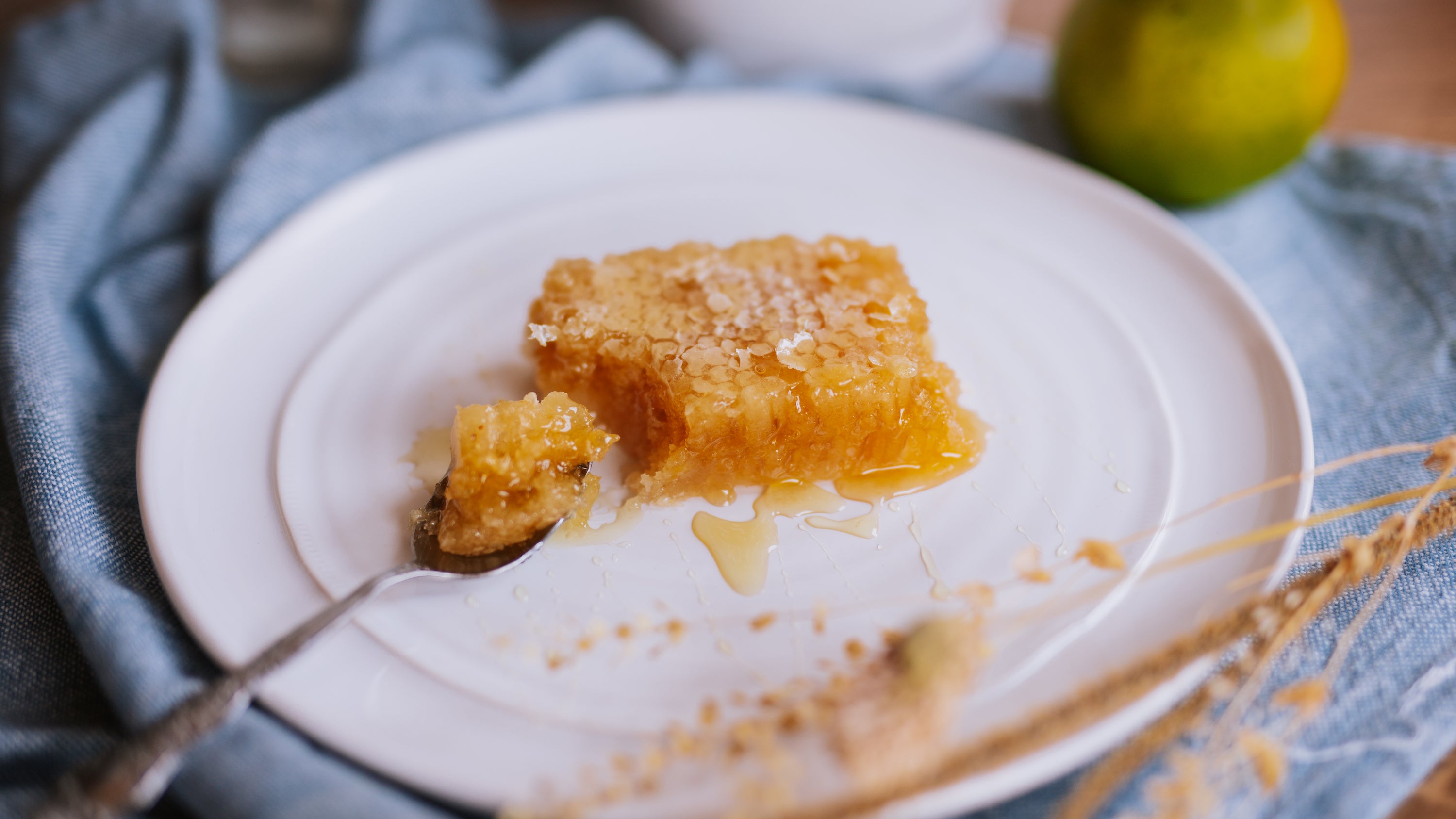
All About Bees
The phrase “busy as a bee,” is one we hear plenty of times throughout our lives, but upon further researching about how and why honey is made, I have discovered how truly remarkable and hard-working these creatures are. The western honey bee, Apis mellifera<, is a eusocial, or true social insect in the order Hymenoptera. This means that their colonies, or hives, include overlapping generations, a division of labor, and they partake in cooperative care of young, or larvae. Honey bees have developed these little worlds and high-functioning societies within their hives to make sure the collective needs of survival are met.
Do All Bees Produce Honey?
There are about 20,000 known species of bees in the world, including bumblebees, leafcutter bees, mason bees, and carpenter bees. Out of these, a smaller percent produce honey. While not the only species that produce honey, Apis mellifera is the species that has been globally recognized as the honey bee. Honey bees are not native to North America, but were brought over by the European settlers in the 1600s (1). The act of beekeeping and consuming honey can be traced all the way back to Ancient Egypt. Since then, the domestication of bees has grown and developed, and they are currently an important aspect of agriculture in North America, not just for the honey they produce, but because they are also responsible for pollinating crops we rely on.
Roles of Bees in the Hive
Within honey bee colonies, different bees have different important roles. The queen is responsible for mating and laying eggs, ensuring the colony has enough members to keep surviving. Worker bees are female bees that are unable to mate. Their primary roles include gathering pollen and nectar. When worker bees are young, within the first few weeks of their lifespan, they are considered house bees, and spend their time maintaining the hive by defending it, tending to larvae and pupae (brood), producing wax and royal jelly, and clearing debris and dead bees from the hive. Worker bees make up the largest percent of the population within a colony. Drones are male honey bees, who develop from unfertilized eggs. Their only role is to fly to Drone Congregating Areas and mate with queens from other hives. Together, these different castes work together to ensure a colony is successful.
Why Do Bees Make Honey?
Bees of all species feed off of nectar and pollen. However, in order to successfully metabolize them and fulfill their dietary needs of vitamins, carbohydrates, lipids, proteins, and minerals, they need to change the chemical compositions of nectar and pollen into honey and bee bread (2). Honey is then stored long-term for colder months, or times when there is a lack of vegetation. Hives have high reproductive rates, and a healthy queen might lay up to 2,000 eggs each day. Therefore, there are many mouths to feed in a hive, averaging at about 40,000 bees.
Why Do Bees Make Honey (& How Do They Use It)?
Making Beeswax & Honeycomb
Worker bees create wax, which they secrete through special glands. This wax is then chewed, softened and molded into honeycomb in order to store honey and house the brood. To create 1 pound of wax, bees must consume 8 pounds of honey (3).
Making & Consuming Royal Jelly & Bee Bread
The bee brood consumes royal jelly, a substance secreted by worker bees and fed to the brood and potential queens. Worker bees consume a combination of pollen, nectar, digestive fluids, and honey called bee bread (4).
Why Bees Make Honey: For Energy!
To create all of these food and shelter sources, and feed a whole hive, honey bees need a lot of energy. They can fly up to 15 miles per hour, and visit millions of flowers in order to gather the nectar and pollen they need. They carry a high percentage of their own body weight when they gather nectar and pollen. After all of this tiring work, bees need high energy food sources. This is why they make and store honey. Having honey as a food source they can stockpile and overproduce in case of low pollen weather conditions creates a healthy hive prepared with a food and energy source for long-term survival.
How Do Bees Make Honey?
Bees need honey for survival. But how do they make it?
1. Collecting Nectar & Pollen
The first step is gathering nectar and pollen from nearby flowers. honey bees will forage in about a five mile radius of their hive (5). Karl Von Frisch studied the ways in which honey bees communicate, and discovered that bees perform dances denoting how far and in what direction surrounding food sources are to other worker bees (6). They gather nectar with their proboscis, or a long tongue, and store it in a specially designed honey stomach, or crop. They gather pollen and store it in a specially designed basket on the back of their legs called a corbicula.
2. Processing Nectar & Pollen into Honey
Nectar starts out at about 80% water, and is thin, clear, and not very sweet. Once back at the hive, the worker bee will transfer it to a house bee, who chews it and transfers it to another house bee, who then chews it and transfers it. This process is repeated for up to about twenty minutes, once the nectar reaches only about 20% water (7). During the chewing process, the chemical compounds of the nectar are changed, and the enzyme invertase, found in a bees saliva, helps break down water content and change sugars into glucose and fructose (8). The transformed nectar substance is then deposited into honeycomb, where bees continue to remove water content by fanning it with their wings. Once it has reached the desired consistency it is covered with wax and stored until it is needed. Pollen is also stored until needed.
Is it OK to Harvest Honey?
Due to selective breeding by beekeepers, and the bees' tendency to overproduce, it is not a threat to bees to harvest honey in moderation. Most beekeepers harvest honey twice a year, once in the spring and once in the fall. Since bees stay within about five miles of their hive to collect pollen and nectar, beekeepers position their hives within that range of the desired plants they want the bees to pollinate. This is how monofloral honey is produced. For example, our Orange Blossom Honey is not infused with orange flavor from the fruit, but has an essence of orange flavor notes from the nectar and pollen gathered from the blossoms of orange trees and other nearby citrus plants flowering at the same time.
Clearly, honey bees stay very busy to ensure a hive is working together in unison. We are so thankful for our ability to enjoy the sweet result of all their efforts. The next time you reach for your favorite honey, you may find yourself with a new appreciation for the bees that made it possible.
Endnotes:
1. https://www.fs.fed.us/wildflowers/pollinators/documents/BeeBasics.pdf
2. Taylor, Michelle A., Alastair W. Robertson, Patrick J. Biggs, Kate K. Richards, Daniel F. Jones, and Shanthi G. Parkar. "The effect of carbohydrate sources: Sucrose, invert sugar and components of manuka honey, on core bacteria in the digestive tract of adult honey bees (Apis mellifera)." PLoS ONE 14, no. 12 (2019): e0225845. Gale Academic OneFile (accessed March 27, 2020). https://link.gale.com/apps/doc/A607540213/AONE?u=nysl_ca_she&sid=AONE&xid=54e4a537
3. https://www.uaex.edu/farm-ranch/special-programs/beekeeping/about-honey-bees.aspx



